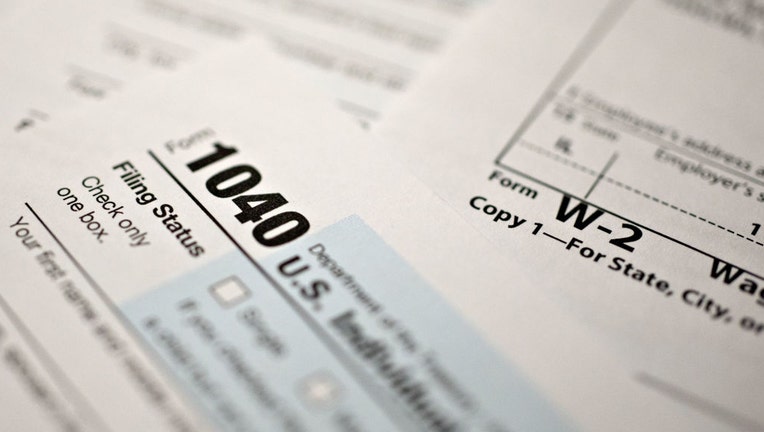With taxes due in 2 weeks, here's how to file a tax extension

FILE-A U.S. Department of the Treasury Internal Revenue Service (IRS) 1040 Individual Income Tax form is next to a W-2 form. (Daniel Acker/Bloomberg via Getty Images)
As the deadline to file your 2023 tax returns approaches, millions of Americans are preparing their documents to meet the April 15 deadline.
But if you’re worried that you won’t have everything ready in time, there is an option to file a tax extension, and here’s how it works.
What is a tax extension?
A tax return extension lets filers request an extra six months to file their taxes, but filers still have to pay their taxes on time. The extension does not provide more time to pay your taxes, but to avoid penalties, filers should estimate and pay their federal taxes by the due date.
How do I file a tax extension?
Individual tax filers can use IRS Free File to electronically request an automatic tax-filing extension. The IRS notes that filing this form gives filers until October 15 to file a return.
RELATED: IRS Direct File officially launches, offering free tax filing in these 12 states
According to the IRS, if October 15 falls on a Saturday, Sunday, or legal holiday, the due date is delayed until the next business day, according to IRS.gov. The return is considered filed on time if the envelope is properly addressed, postmarked, and deposited in the mail by the due date.
To get an extension, tax filers must estimate their tax liability on this form and should also pay any amount due.
However, it is important to remember that the extension is only to file your taxes, not to pay them. If you owe taxes, you should pay an estimated amount before the deadline so you avoid paying penalties and interest. If you expect to receive a refund, you will still receive your money when you file your taxes.
What forms do I need to file a tax extension?
Individual tax filers will need Form 4868 to file an automatic extension. According to the IRS, special rules could apply to filers if they are serving in a combat zone or a qualified hazardous duty area, living outside the United States, or qualify for tax relief in disaster situations.
RELATED: Child tax credit expansion part of bipartisan $78B deal proposed in Congress
Businesses and corporations filing tax extensions have to use Form 7004.
The IRS notes that Form 1138 is for an extension of time for Payment of taxes by a corporation expecting a net operating loss carryback, meaning a loss sustained or portion of a credit not used that can be deducted from taxable income of a prior period.
When is the deadline for filing a tax extension?
Tax day is April 15 and marks the last day to submit a request for an income tax extension, giving filers six more months to file their tax return.
How many tax extensions can you file?
Filers can't request more than one tax extension per return.
What happens after I file my tax extension?
Once the tax extension is submitted, individuals still have to file their final return by Oct. 15, but if you miss the October due date, financial penalties will accrue.
The Associated Press contributed to this report. This story was reported from Washington, D.C.

